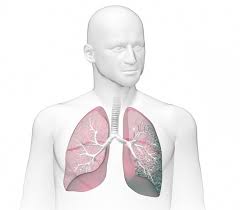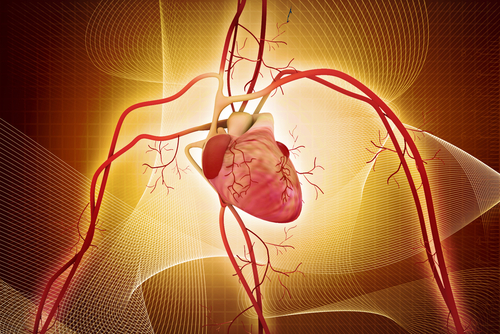
Idiopathic pulmonary fibrosis (IPF) is a progressive parenchymal lung disease of unknown etiology and poor prognosis. Poor prognosis has been associated with older age, male gender, lower FVC, lower diffusing capacity of the lung for carbon monoxide (Dlco), desaturation during exercise, and the extent of fibrosis seen on imaging studies. The development of pulmonary arterial hypertension (PAH) in patients with pulmonary fibrosis is well recognized. Studies from the last few years have shown that PAH measured with right-heart catheterization or transthoracic echocardiography in IPF patients is associated with low Dlco, shorter walk distances, and desaturation during exercise. Similar relationships have been identified when brain natriuretic peptide was used as a surrogate marker for PAH in IPF patients. The optimal approach to identifying which IPF patients have PAH remains controversial, however. Nevertheless, increasing pulmonary artery pressure (PAP) is associated with an increasing risk of death in IPF patients, while elevated preoperative PAH may contribute to posttransplant mortality in IPF.
That PAH in IPF relates poorly to the degree of lung restriction has been suggested by several au-thors. In this issue of CHEST (see page 657), Nathan and colleagues extend this information by expanding on their initial observations. They note a prevalence of PAH of approximately 41% primarily in IPF patients undergoing evaluation for lung transplantation. This estimate is a bit problematic as 16% of patients had an elevated pulmonary capillary wedge pressure at the time of right-heart catheterization. Although a broad range of time was noted between right-heart catheterization and pulmonary function, there was poor correlation between PAPs and FVC. Somewhat better correlation was noted with Dlco and the ratio of FVC percent predicted to Dlco percent predicted when these variables were expressed as deciles. Despite these analyses, it is evident that the predictive ability of pulmonary function for PAH was modest in this patient population.
Despite the growing body of knowledge about PAH in IPF patients, the natural history of this process has not been well described. In this issue of CHEST (see page 650), Hamada and colleagues describe the clinical course of 61 patients with IPF who underwent right-heart catheterization and were followed up over a 14-year period. A minority of patients (8%) were found to have a mean PAP of > 25 mm Hg. Receiver operating characteristic curves were used to identify a critical cutoff value for PAP of 17 mm Hg. Patients with a PAP of < 17 mm Hg had a lower risk of death at 5 years compared to those with a PAP of > 17 mm Hg (37.8% vs 83.3%, respectively; p < 0.001). Interestingly, a subset of patients with normal PAP (ie, PAP between 17 and 25 mm Hg) experienced an increased risk of death. Although not reported by the investigators, these patients may have exhibited normal resting PAP but PAH with exercise. Supporting the finding of previous investigators, the 5-year survival rate of patients with a Dlco of < 40% predicted was 20.0%, compared to 70.4% in those patients with a Dlco of > 40% predicted (p < 0.001). Although pulmonary hypertension contributed to overall mortality, its presence did not necessarily signify a grave outcome for individual patients. The authors describe prolonged survival in two of their patients with a PAP of > 17 mm Hg and a Dlco of < 40% predicted. As such, these data provide important insight into the multifactorial nature of mortality risk in IPF patients, Furthermore, these are the most compelling data published to date confirming that PAH in IPF patients is associated with a worse long-term outcome. Pulmonary hypertension has a negative influence on erectile function. Improve it with Canadian Neighbor Pharmacy’s Viagra.
 The association of PAH with increased mortality in IPF patients has raised the possibility that therapy directed against PAH may be of benefit in IPF patients, The endothelin signaling pathway and nitric oxide/cyclic guanosine monophosphate pathways are both important in the development of PAH. Sildenafil is an oral agent that preferentially blocks phosphodiesterase-5 in well-ventilated areas of the lung. When compared to therapy with inhaled nitric oxide and IV prostacyclin, sildenafil was found to preferentially lower pulmonary vascular resistance and improve gas exchange in a mixed group of patients with severe pulmonary fibrosis. In this issue of CHEST (see page 897), Collard et al report the findings of an open-label, 3-month study of sildenafil in patients with IPF and PAH. Fourteen patients were followed up, and 11 patients completed serial 6-min walk studies. There was an overall improvement in the walk distance of 49.0 m (90% confidence interval, 17.5 to 84.0). The authors arbitrarily defined a > 20% improvement in their 6-min walk distance as being clinically significant; 57% of patients exceeded this threshold. These preliminary data provide an intriguing suggestion that the modulation of PAP in IPF patients may provide a functional benefit. They should, however, be interpreted with caution as the sample size was small, 3 of 14 patients were not able to provide data to assess the primary end point, and the treatment duration was short. Furthermore, the mean 49.0-m improvement seen in this study falls short of the widely accepted clinically significant 54.0-m improvement in 6-min walk distance, which is the shortest distance that correlates with subjective improvement in patients with COPD. These limitations, in addition to the lack of a control group, limit our ability to arrive at definitive conclusions about the role of sildenafil in the treatment of IPF complicated by PAH. Nevertheless, these authors provide preliminary data that can be used to design future, placebo-controlled studies examining the long-term effects of modulating PAH in IPF. In fact, further investigation of sildenafil in the treatment of PAH complicating IPF is ongoing with two phase 2 trials underway.
The association of PAH with increased mortality in IPF patients has raised the possibility that therapy directed against PAH may be of benefit in IPF patients, The endothelin signaling pathway and nitric oxide/cyclic guanosine monophosphate pathways are both important in the development of PAH. Sildenafil is an oral agent that preferentially blocks phosphodiesterase-5 in well-ventilated areas of the lung. When compared to therapy with inhaled nitric oxide and IV prostacyclin, sildenafil was found to preferentially lower pulmonary vascular resistance and improve gas exchange in a mixed group of patients with severe pulmonary fibrosis. In this issue of CHEST (see page 897), Collard et al report the findings of an open-label, 3-month study of sildenafil in patients with IPF and PAH. Fourteen patients were followed up, and 11 patients completed serial 6-min walk studies. There was an overall improvement in the walk distance of 49.0 m (90% confidence interval, 17.5 to 84.0). The authors arbitrarily defined a > 20% improvement in their 6-min walk distance as being clinically significant; 57% of patients exceeded this threshold. These preliminary data provide an intriguing suggestion that the modulation of PAP in IPF patients may provide a functional benefit. They should, however, be interpreted with caution as the sample size was small, 3 of 14 patients were not able to provide data to assess the primary end point, and the treatment duration was short. Furthermore, the mean 49.0-m improvement seen in this study falls short of the widely accepted clinically significant 54.0-m improvement in 6-min walk distance, which is the shortest distance that correlates with subjective improvement in patients with COPD. These limitations, in addition to the lack of a control group, limit our ability to arrive at definitive conclusions about the role of sildenafil in the treatment of IPF complicated by PAH. Nevertheless, these authors provide preliminary data that can be used to design future, placebo-controlled studies examining the long-term effects of modulating PAH in IPF. In fact, further investigation of sildenafil in the treatment of PAH complicating IPF is ongoing with two phase 2 trials underway.
The development of PAH in IPF patients seems to portend an ominous, though not universal, signal of mortality. Further, prospective, longitudinal studies are required to determine the discriminatory factors that identify those IPF patients in whom IPF will develop and the implication on long-term outcome. Phase 3 trials of therapy directed against mediators of PAH are needed to determine whether these agents can provide improved cardiopulmonary function and symptomatic relief for these patients with limited treatment options.

